Hedda Andersen is from Oslo has a BSc in geosciences and am currently working on her MSc in Glaciology. She has studied in Oslo and on Svalbard in the Arctic, with University of Oslo (UiO) and the University Centre in Svalbard (UNIS).
Normally I work as an Environmental Scientist for a high-end Norwegian expedition cruise company, but due to the Covid-19 pandemic, I am currently on hold for getting to work- like most of my co- workers. So, I decided to ever so “why not” start my master courses this fall, so I one day can also be a master of something cool, like climate and glaciers.

My road to success has always been to follow my heart, and I have to be honest and say that has definitely not led me down the path most trodden by others. I started my geosciences BSc in Oslo in 2010, and by 2012 I had had enough of living in the capital of Norway and not exploring the big world out there. I also wanted more than anything at that point in life, to fly. So I went, I flew professionally for 6 years and was out of the world of geosciences for all those years. But I always kept glancing back to the science of our Earth, and I knew I would likely one day return. And so I did in 2018, I put my airsports career on the shelf (I still skydive and fly today but on a hobby level) and moved to 78 degrees North to the archipelago called Svalbard and a tiny Arctic town called Svalbard. Let me tell you, Svalbard is the place for a geologist.
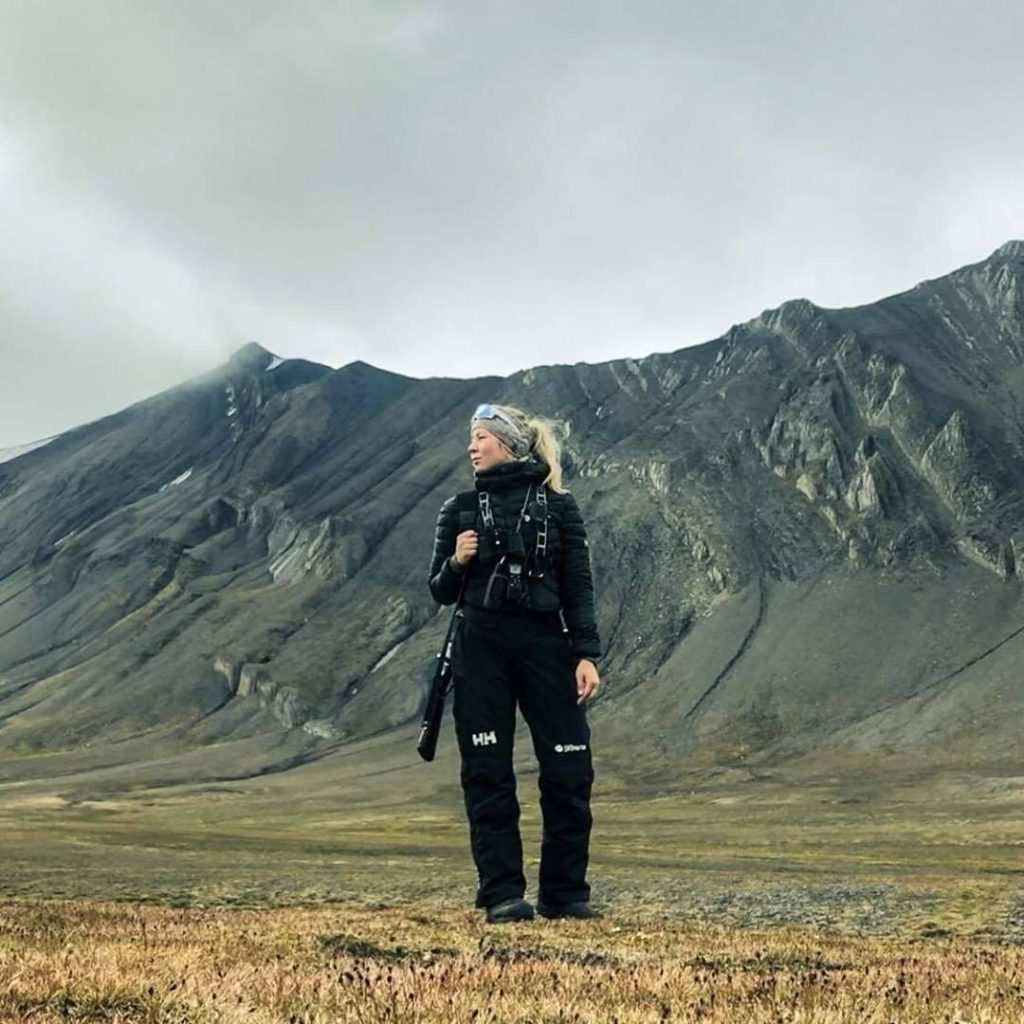

Here I was allowed to enter full-time bachelor courses in Arctic geology and did a full year of courses to complete my BSc in geosciences in 2019, nine years after I first started. I am beyond grateful for this opportunity, because not only did I get to complete a BSc, I rediscovered a deep passion for geosciences, and for Arctic geosciences in particular. Studying with UNIS on Svalbard gives you a completely unique opportunity to learn, understand, and evolve within Arctic geology. For example, in the natural geography of Svalbard course, I personally executed with two fellow students, a complete and complex mass balance study of the glacier that feeds the drinking water to Longyearbyen. We independently carried and re-drilled ablation stakes and found existing ones to measure- and then computed all the numbers and created a digital elevation model of the glacier. We also did a complete geomorphological mapping of the glacier ́s moraine area in addition. All this was presented on a scientific poster for which we received an A for our exam. Today, our work is cited and built upon by new students on the course (guess who is the lucky winner for the last name reference before the et. al).

In the wonderful cryospheric world, there are so many areas to learn and understand – glaciers, hydrology, permafrost, snow – and landforms and geomorphology. To mention a few.
I have also done some really fab courses in sedimentology/structural and geological methods on Svalbard, aka how to go from an outcrop to a complete geomodel. On Svalbard, close to a complete sedimentary strata record is preserved from about 700 ma until 50 ma. This means you are literally in a candy shop for reading the geological history of the area and from there extrapolate to the global geological history. I never thought I would like sedimentology ever again after a pretty dull mandatory bachelors course at UiO back in the day (sorry no offense to anyone but omg this was a dusty course), but studying the complete sedimentary and structural history of Svalbard ignited a true passion for it.
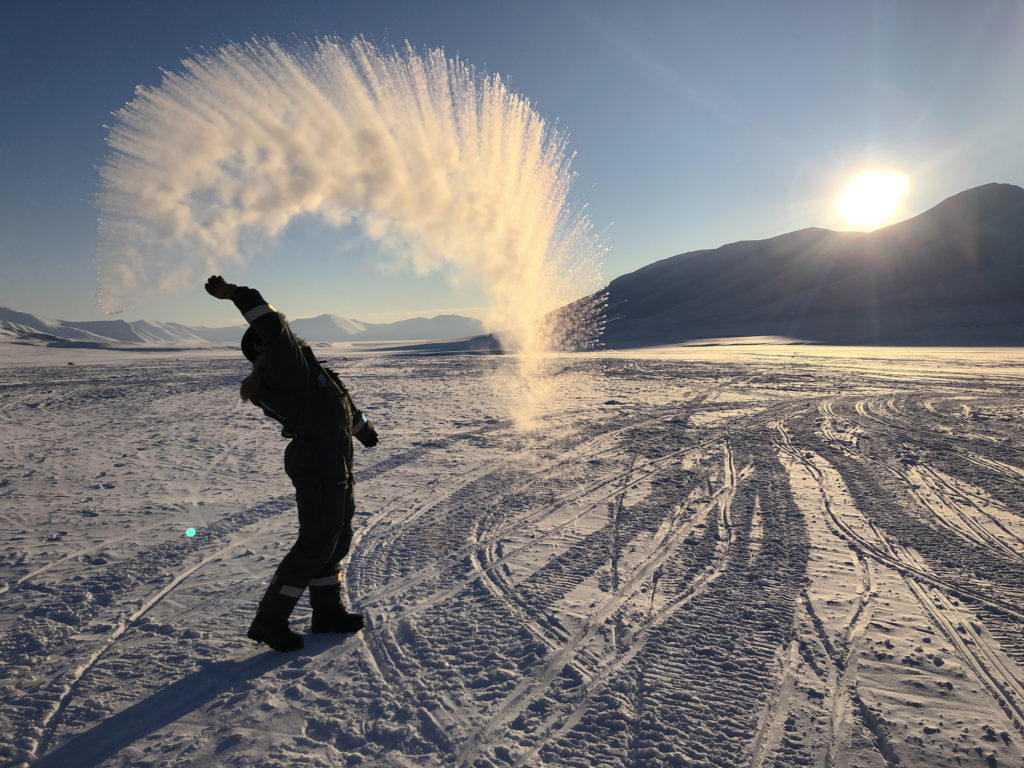
Studying on Svalbard is the real deal. You are outside in all kinds of weather and temperatures down to -30 degrees celsius, in the crazy remote Arctic, where you have no cell service and carry a rifle in case a polar bear comes along and you look tasty. You have a close to complete geological history preserved in the rocks and can find anything from triassic Ichthyosaurs to leaf and plant fossils from terrestrial eocene – all witnessing of completely different depositional environments, linked again to global climate and tectonics on a grand scale. You have 34 000 km2 of glaciers, mostly large marine glaciers in addition to valley glaciers – and they are melting away at a rate so quick it hurts to take the reality of it in.
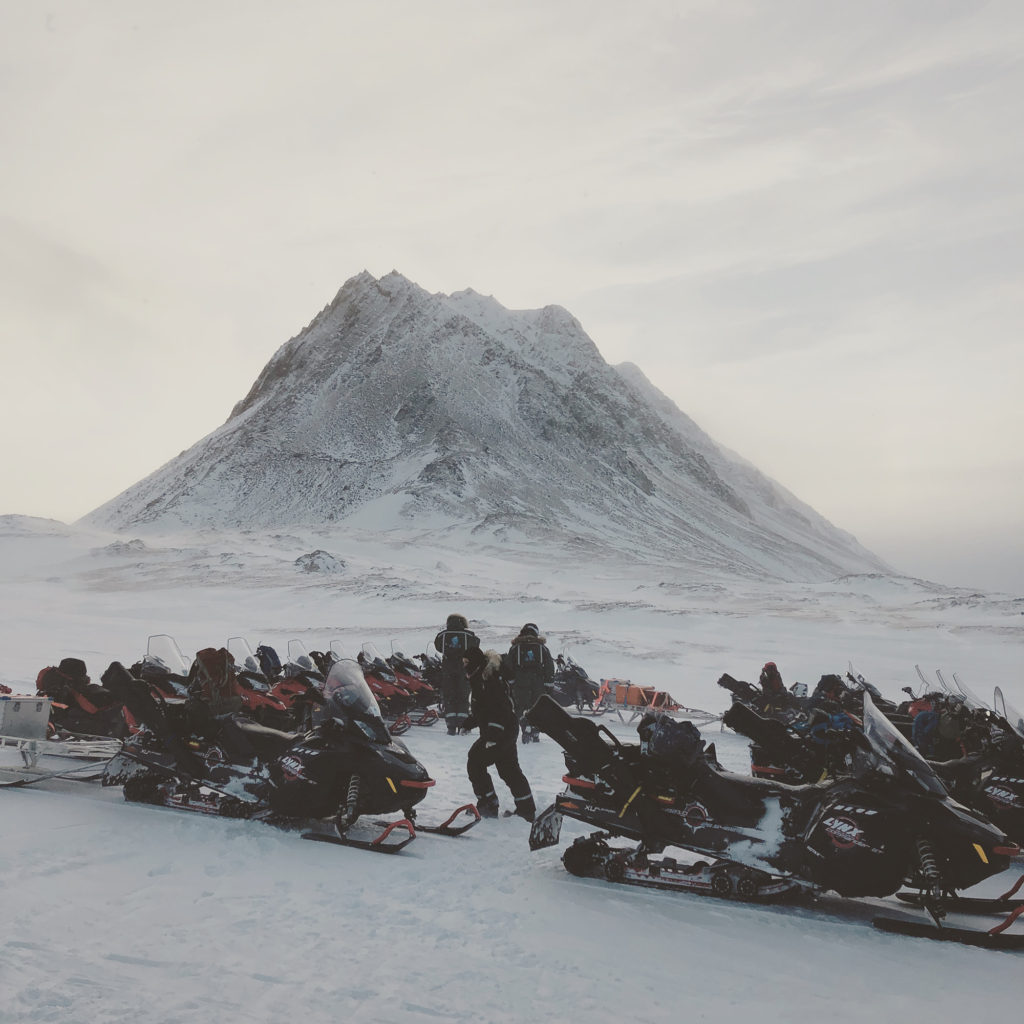
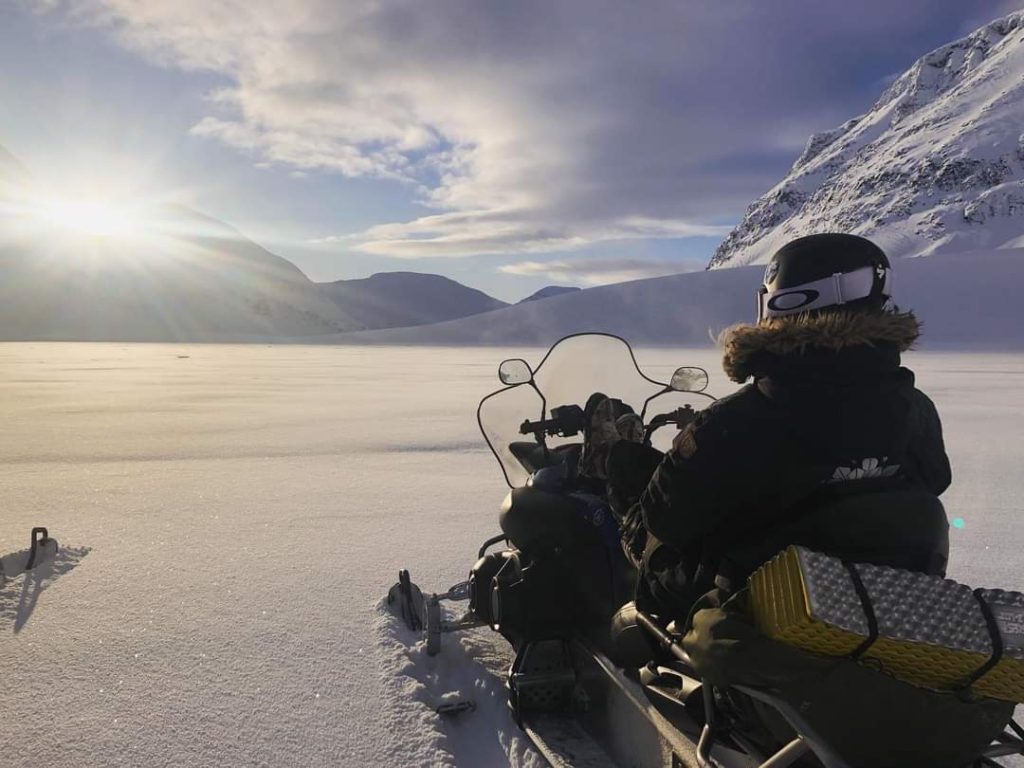
In my almost two years on Svalbard, I would eyeball changes in glacier areas. This summer, huge parts of one of the most visited marine glaciers on Svalbard – Nordenskioldbreen, wasn ́t even in the sea any more when we took the zodiacs out to have a look. Most of the eastern glacier front is now sitting on complete dry land. It wasn ́t last year.
Climate changes are real and they are happening so fast in the Arctic, that we can visibly and clearly see the differences year to year now. The Arctic is melting up to four times the rate of the rest of the world, and the predictions are dire. I found my true and real passion again on Svalbard – the disappearing glaciers. I want to study them, understand them, and be able to constructively be able to help predict what will happen, how, why, and when.
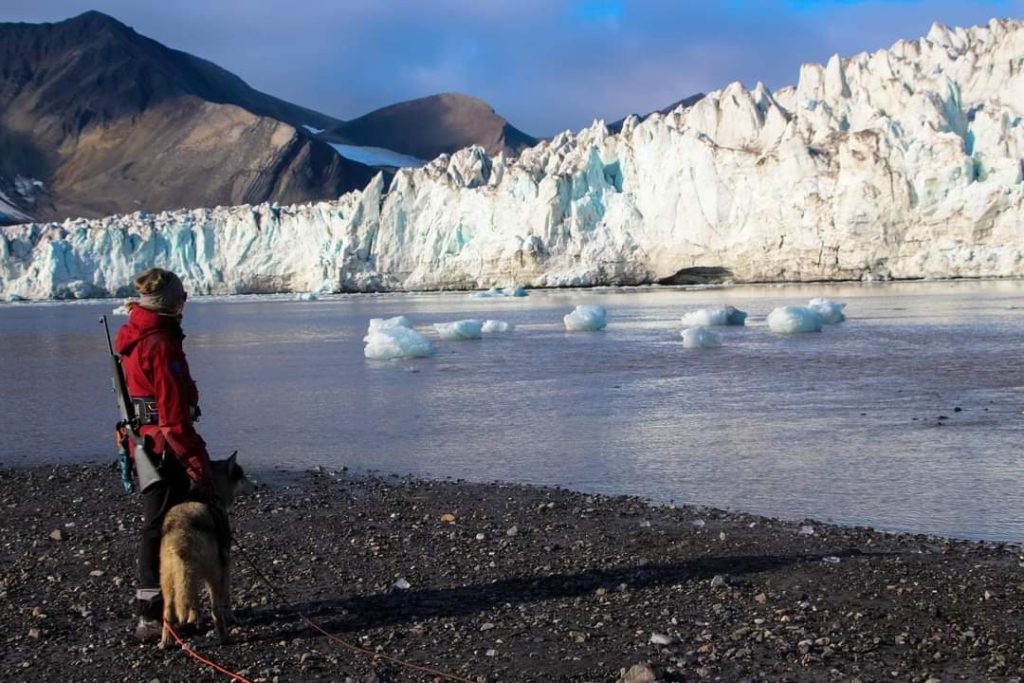
I am combining forces, I am working on getting a higher level academic understanding of glaciers and climate in addition to working with it commercially. The more people I can teach but also learn together with as I commence field work in the Arctic and Antarctic through work and university, the better.
Knowledge is power, and it would be good to learn more.
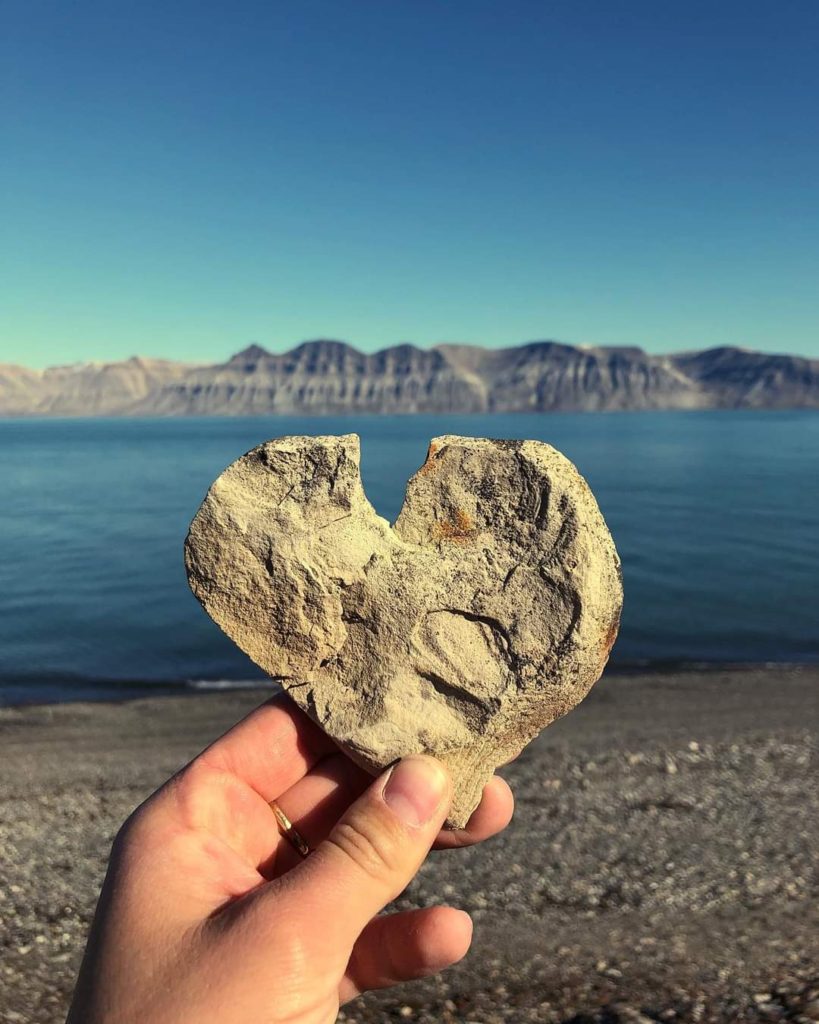
![]() This work is licensed under a Creative Commons Attribution-NonCommercial-ShareAlike 4.0 International License.
This work is licensed under a Creative Commons Attribution-NonCommercial-ShareAlike 4.0 International License.
